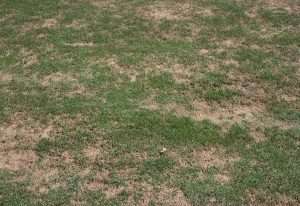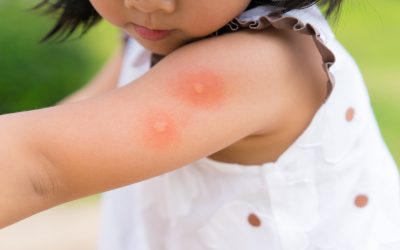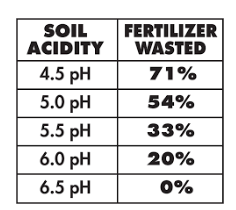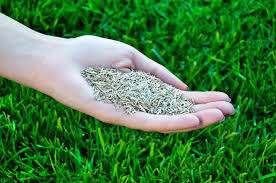In a previous post, we wrote about the potential for lawn fungus outbreaks this summer due to the cold, extremely wet spring we had in NOVA this spring. While a variety of fungi are showing up, none seems to be as prevalent this summer (2020) as Brown Patch.
Brown Patch is a major and common summer disease occurring on residential lawns as well as on golf courses. Brown Patch traditionally begins as a small brown spot and can quickly enlarge. Sometimes, homeowners believe their lawn has been damaged because of a lawn application. They also may think parts of their lawn are simply drying out and dying as temperatures hit the 90’s on a regular basis.

How can you tell if what you are seeing is Brown Patch? As the disease progresses and the brown spots increase, the symptoms include a circular, sometimes horseshoe, shape that can grow to several feet across the lawn.
DISEASE CYCLE:
The fungus overwinters in the form of persistent, resting bodies called sclerotia, either in the infected grass tissue or in the soil. The fungus is capable of surviving in the soil for years. Choose grass varieties that are resistant to funguses, like Brown Patch, as ProLawn® does. Inexpensive seed blends offered at retail are not always the best value in the long term.
Disease activity is prevalent when:
- Surface moisture and humidity are high;
- Night temperatures are above 68°F and day temperatures average 80°F or above; and
- Rainy weather and saturated atmosphere (high humidity levels) are present.
Disease severity is greater on lush, succulent turfgrass maintained with high nitrogen levels as opposed to grasses maintained with moderate levels of nitrogen. ProLawn feeds lawns frequently with low doses of nitrogen to meet the moderate level requirement.
CONTROL:
When environmental conditions are favorable, Brown Patch is likely to develop on susceptible turf grasses. The severity of the disease can be somewhat controlled by:
- Applying fungicides at regular intervals; (Fungicides are more effective when used as a preventative before the disease occurs.)
- Fertilizing using moderate quantities of nitrogen and trace elements at the right time;
- Watering early in the morning and allowing grass to dry quickly;
- Mowing grass taller (3” or higher) with a sharp mower blade; and
- Bagging lawn clippings during disease activity.
PREVENTION:
The best prevention for Brown Patch is to:
- Aerate annually;
- Reduce shade;
- Follow a fertilization program with moderate nutrients; and
- Avoid watering late in the day.
Here’s a link to Clemson’s Extension page on Brown Patch that offers great information that’s relevant for our area.
Of course, you can always call the Pros at ProLawn at 540-662-8316 with any questions or concerns and right away at the first sign of a possible fungi infection!



